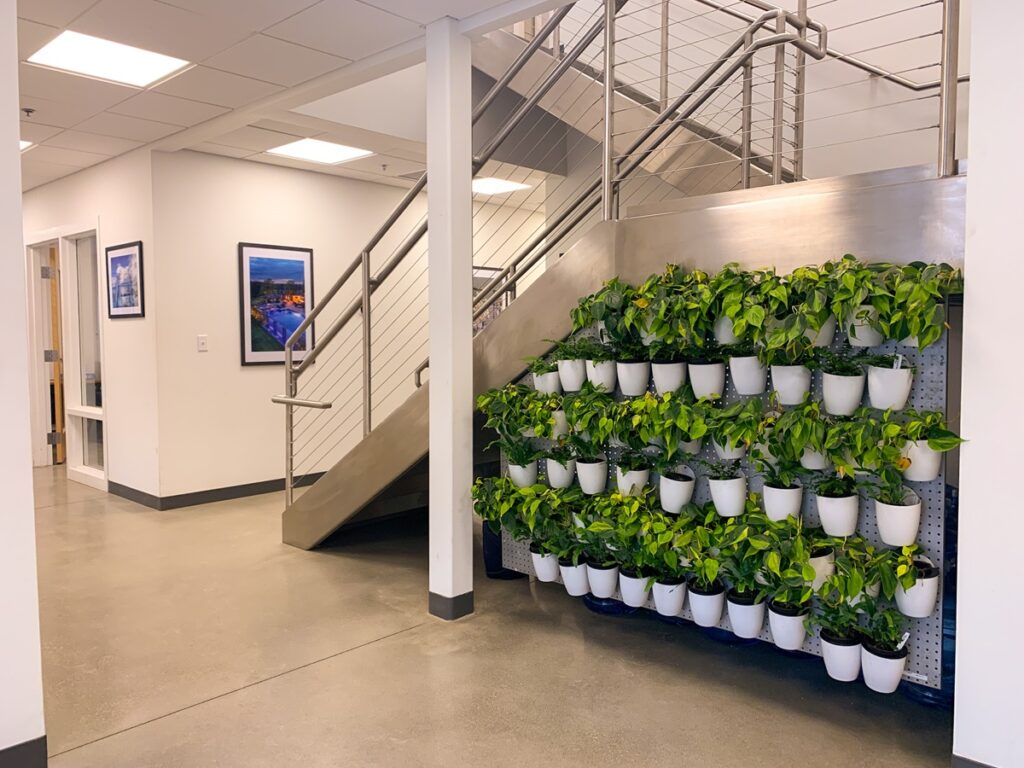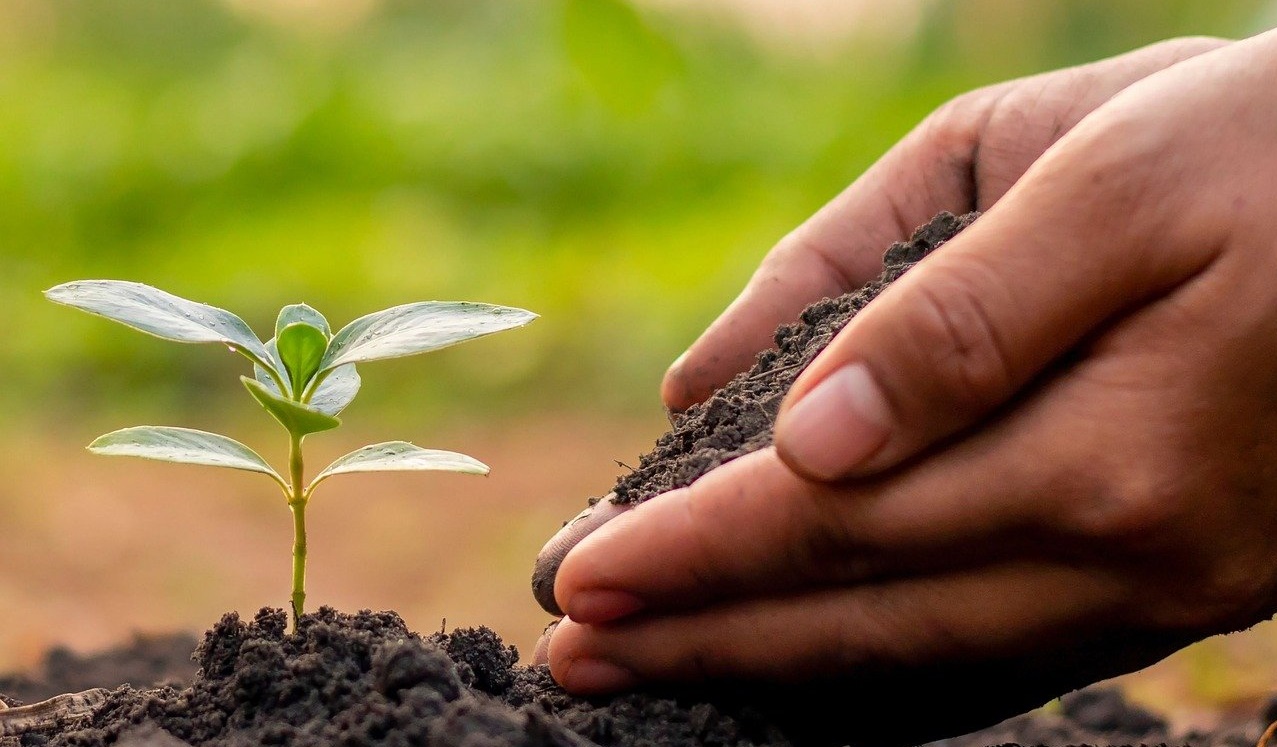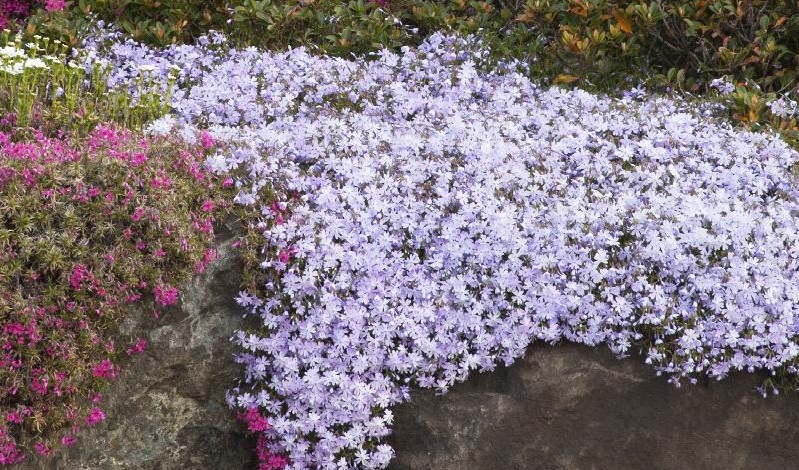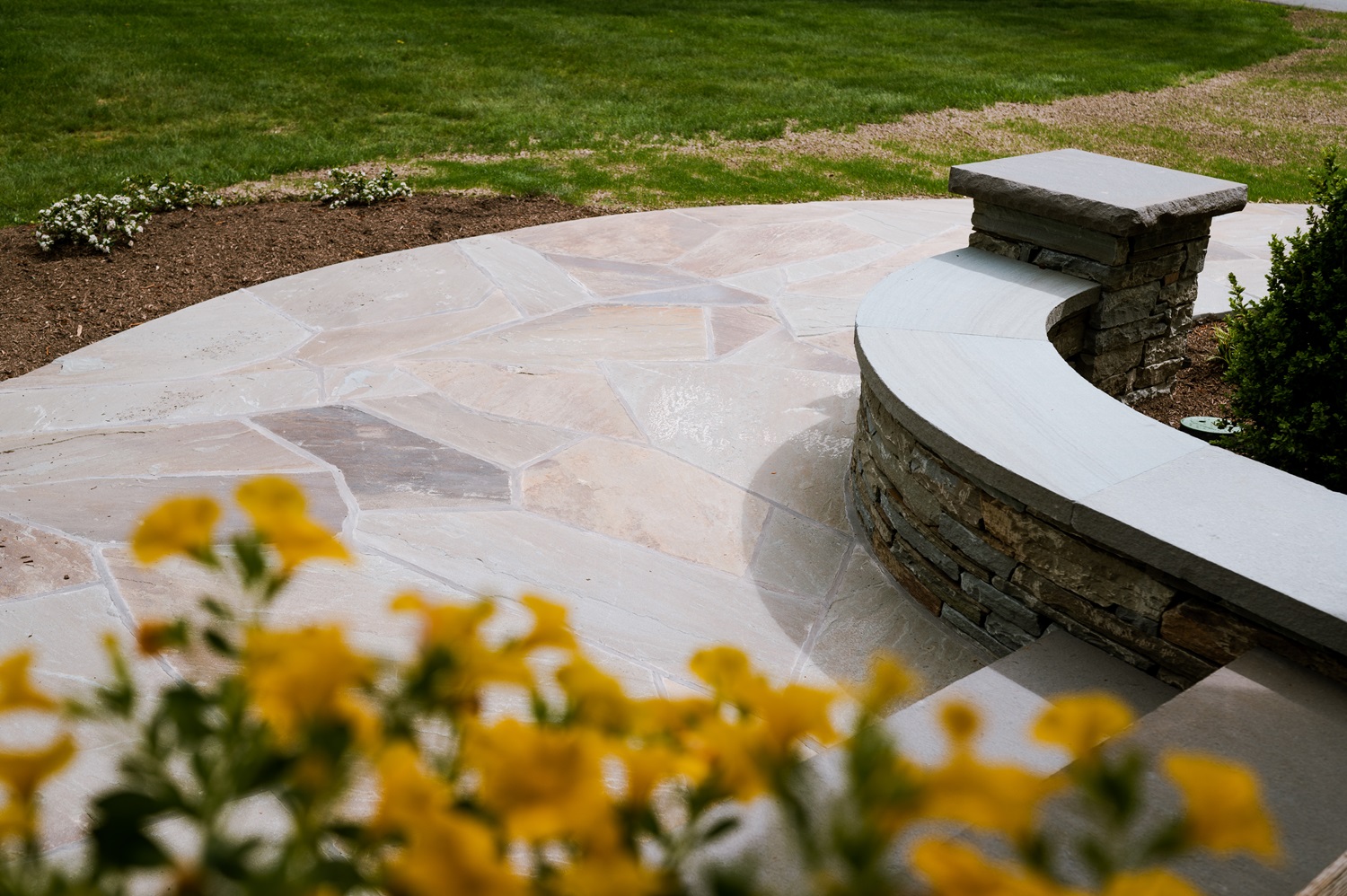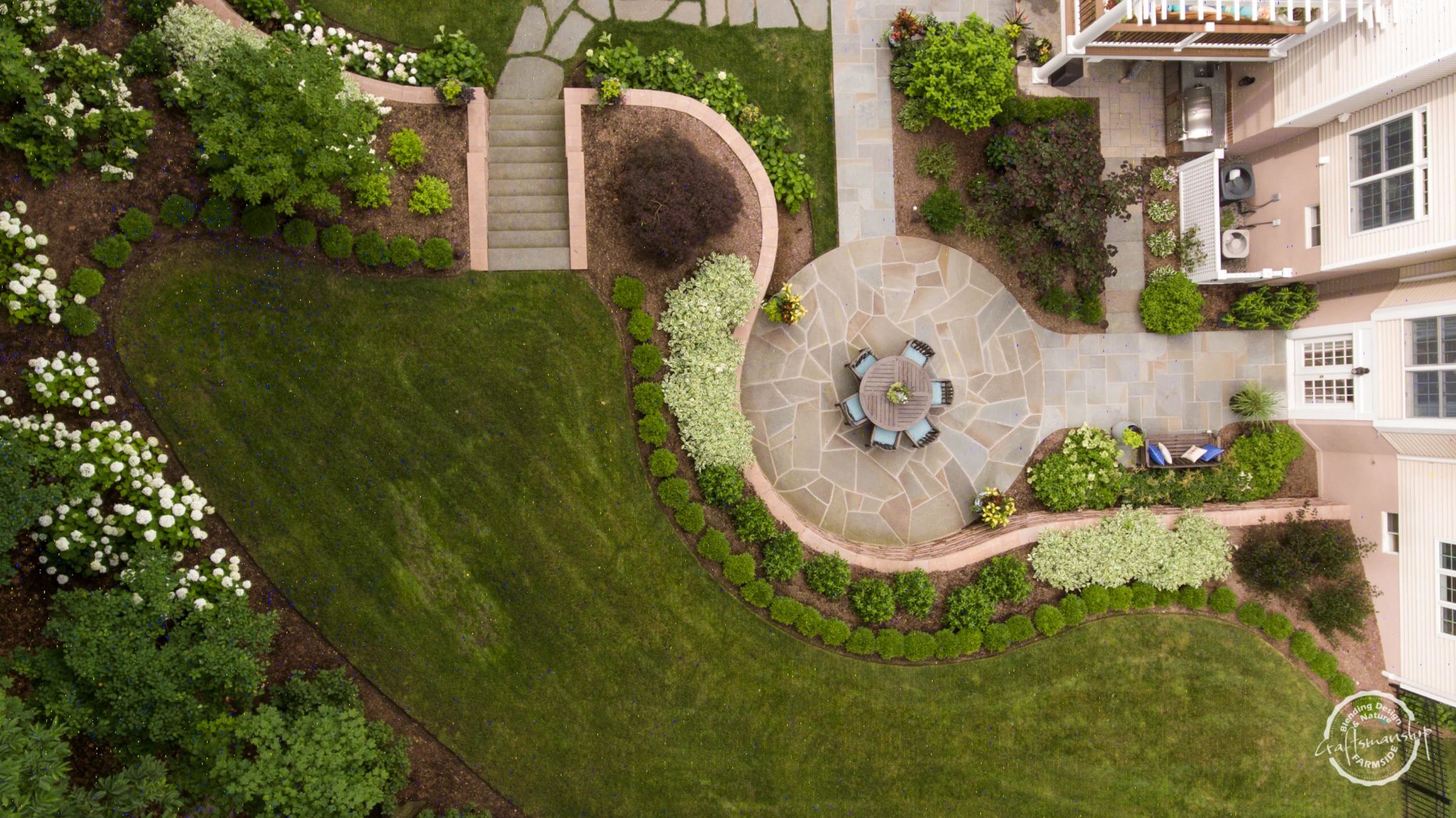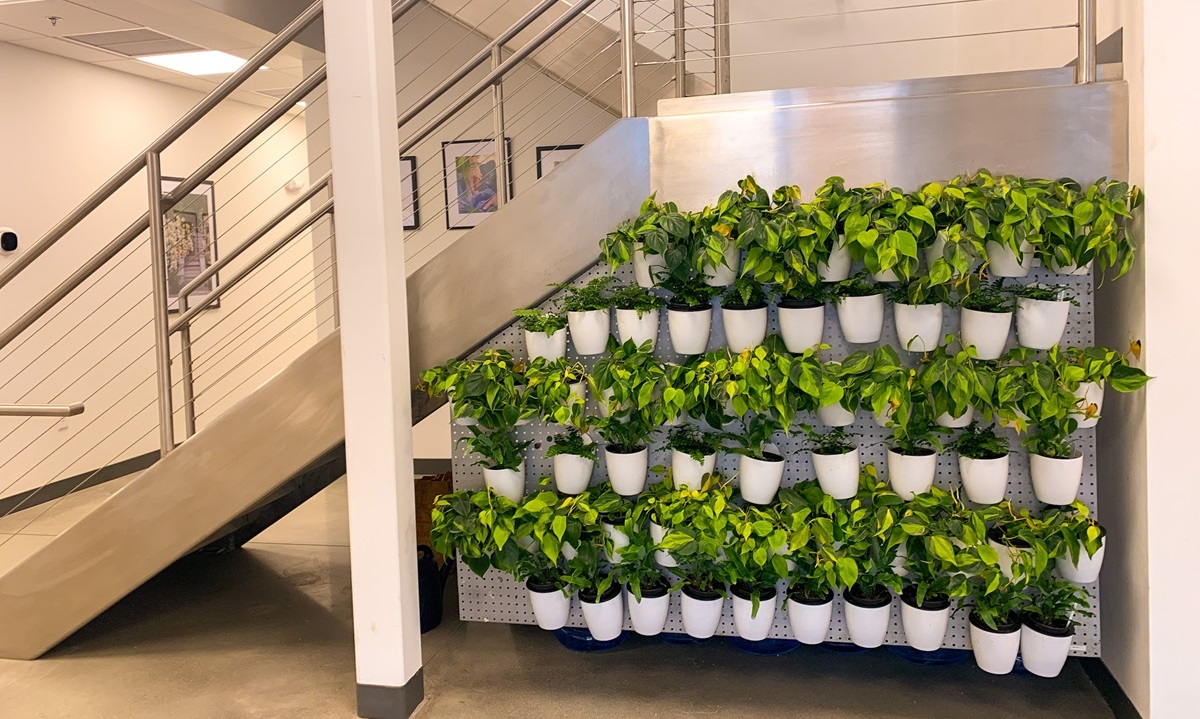Avid or experienced houseplant cultivators may already have tools like grow lights, indoor green houses, and heating pads to create ideal growing environments for plants. Up for a challenge? Try some of these beautiful plants that can be somewhat finicky, but more than equally rewarding:
Foliage Plants
Crotons (Codiaeum spp.) – The dramatic foliage of this plant includes hues of brilliant yellow, pink, orange and red, adding a touch of tropical color to your room. To ensure Croton’s health and color vibrancy, it requires lots of bright light (daylight and/or artificial light). Regular watering (when top couple of inches of soil is dry) is fine, but the plant does like humidity, so group it with other houseplants, place it atop a dish of pebbles with water or use a humidifier nearby. Keep out of reach of children and pets.
Spiderwort (Tradescantia fluminensis) – With its beautiful variegated green and purple leaves and cascading growth pattern, Tradescantia looks stunning in hanging containers. Soil should be moist at all times, but not saturated. Setting its container (with drainage holes) in a tub of water so it can absorb it from the base up is a good way to water this plant. Plenty (at least 8 hours) of bright, indirect light is needed. Direct sun can scorch the plant’s leaves. Misting or adding additional humidity will benefit the plant, too. Keep out of reach of children and pets.
Boston Fern (Nephrolepis exaltata) – Bright, indirect light, frequent proper watering and regular feeding will keep your Boston Fern thriving, but another key factor in keeping this plant healthy is ensuring environmental consistency in a warm, humid space. Drafts from windows or temperature fluctuations from being too close to a heating or air conditioning vent can quickly damage the plant. Safe for both children and pets.
Flowering Plants
Dendrobium orchids (Dendrobium) – Most inexperienced indoor gardeners wind up killing these plants with overwatering and/or over feeding, especially after they’ve dropped their flowers. To get optimum blooms, keep this orchid in bright, indirect light and avoid potting soil – instead, pot in sphagnum moss or orchid bark. These plants need staking to support the ample, large blooms. Dendrobium orchids like humidity (50-70%) so group plants together or place your plant on a tray of pebbles with water. Dendrobium orchids like to be housed in smaller pots where their roots are somewhat cramped. Safe for kids and pets.
Camelias (Camelia sinensis) – The challenge with growing Camelias indoors is that most homes are kept too warm, too dark and too dry for this beautiful blooming plant. A Southern-facing window is a good choice for its light needs, but they may still require additional lighting such as full-spectrum artificial light during fall and winter. Soil requirements are important too – avoid commercial mixes because they don’t drain well enough for Camelias. An 80% ground-aged bark with 10% coarse sand and 10% peat moss mix is ideal. This plant needs to stay moist, but well-drained, so a smaller container also helps in avoiding water draining too slowly. To encourage blooms, Camelias need cool temps – below 60oF at night. Avoid fertilizing Camelias during their dormancy, and only use fertilizers formulated for Camelias or Azaleas. Child and pet safe.
Gardenia (Gardenia jasminoides) – Dark glossy leaves, brilliant white blooms and intensely fragrant, Gardenias can be a houseplant showstopper if you give it the proper TLC. Place the pots somewhere with a relatively steady temperature that’s about 60°F at night, and 70 to 75°F during the day. Avoid placing the plant by a drafty window or heating/air conditioning vents. Light can be a challenge. Gardenias need lots of bright light – about 4-5 hours per day but can wilt with too much direct light. Sunny mornings and shadier afternoons make them happy. Consider a grow light during the shorter daylight span in winter. They enjoy humid environments (50%) so mist, place them on pebbled trays with water and use a humidifier when the heat is on in your home. Opt for a potting soil mixture for acid-loving plants like Camelias and Azaleas. Keep out of reach of children and pets.
Be sure to check out all of the posts in this series!
- General Houseplant Tips
- Houseplants for Beginners
- Houseplants for Intermediate Skill Levels
- You Are Here -> Houseplants for Advanced Levels
*All Images are from our friends at rpmarzilli.com – their beautiful indoor living wall garden!
